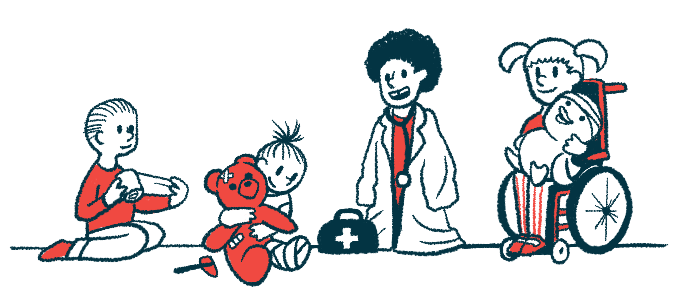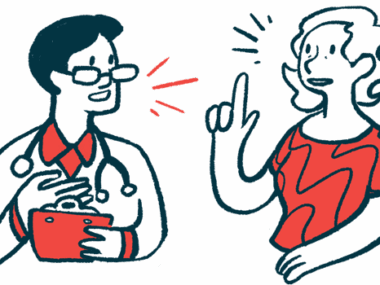Anxiety, depression in children with CF may ease with Trikafta
Researchers led study of 81 children to know more about therapy's effects
Written by |

Treatment with Trikafta may help ease severe symptoms of anxiety and depression in children with cystic fibrosis (CF), a study in the U.S. suggests.
The study, “Mental Health of Pediatric Patients with Cystic Fibrosis after 18 Months on Elexacaftor-Tezacaftor-Ivacaftor Therapy,” was published in Pediatric Pulmonology. The study’s researchers said more studies “over longer time periods will be necessary to identify potential long‐term effects of [Trikafta] on mental health.”
CF results from mutations in the CFTR gene and leads to either a complete absence or malfunction of the CFTR protein, which is crucial for regulating the flow of salts into and out of cells. When it fails to function properly, thick mucus accumulates in various organs, causing most symptoms associated with the disease.
CFTR modulators, which target the underlying defect in the CFTR protein, have revolutionized treatment for CF patients, offering significant clinical improvements. Trikafta is a triple combination therapy that contains ivacaftor, tezacaftor, and elexacaftor. It’s marketed by Vertex Pharmaceuticals and is approved in the U.S. to treat children as young as 2 with eligible CFTR mutations.
Owing to CF’s complexity, treatment demands, and limitations to everyday life, the disease can significantly impact mental health. So far, case reports and other studies of mental health in people taking CFTR modulators such as Trikafta have focused mainly on adults and adolescents, with varying results.
Analyzing depression, anxiety in children with CF
Here, scientists at Nationwide Children’s Hospital led an observational study of 81 children with CF being treated with Trikafta to better understand its effects on pediatric patients. The median age at the start of the study was 12 and 49.4% of the participants were girls.
Children aged 12-17 had depressive symptoms evaluated using the Patient Health Questionnaire 8 (PHQ‐8). The cutoff for clinically relevant symptoms was set at a minimum score of 10. Patients aged 8-17 completed the Patient‐Reported Outcomes Measurement Information System‐Depression (PROMIS‐D) to validate the findings. Scores in PROMIS‐D of 60 or higher identified patients with elevated mental health symptoms.
Anxiety was assessed in children ages 12-17 with the Generalized Anxiety Disorder 7‐item (GAD‐7), with a cutoff for clinically relevant anxiety symptoms set at a minimum score of 10. The Patient‐Reported Outcomes Measurement Information System‐Anxiety (PROMIS‐A) was used as a second validated instrument in participants ages 8-17, with a score of 60 or higher indicating elevated symptoms.
Study visits occurred at the start of Trikafta therapy and then after one, three, six, nine, 12, and 18 months.
At the start, or baseline, about three-quarters of the participants didn’t have depressive symptoms, though a small number of children reported elevated baseline scores on the PROMIS‐D (8.8%) and PHQ‐8 (13%). Anxiety symptoms were also in the normal range in most children. Elevated baseline scores were found in 8.9% (GAD‐7) and 12.3% (PROMIS‐A).
After 18 months on Trikafta, 85%-92% of children reported depressive symptoms within the normal range. Within a month of treatment, a significant decrease was observed on PROMIS‐D (mean decrease of 2.67 points). Such a decrease was again found after six and 12 months.
The percentage of patients within elevated ranges as assessed with the PHQ-8 dropped from 13% to 3% and from 8.8% to 2.6% on the PROMIS‐D. Significantly more girls reported elevated PHQ‐8 (42% vs. 13%) and PROMIS‐D (35% vs. 15%) scores.
Anxiety symptoms, assessed with GAD‐7, were significantly reduced only after 12 months and remained lower at the end of the study. Mean PROMIS‐A scores decreased significantly at every point compared with the baseline.
On both measures, no child had elevated symptoms by the end of the study. Boys and girls weren’t significantly different regarding anxiety scores, but more girls continued having depression symptoms.
The findings show depression and anxiety aren’t common among children with CF at the start of Trikafta and the “percentage of patients experiencing severe symptoms of depression and anxiety may decrease with ongoing use of [Trikafta],” wrote the researchers, who noted that having PHQ-8 and GAD-7 standardized only for patients 12 years and older is a limitation.







